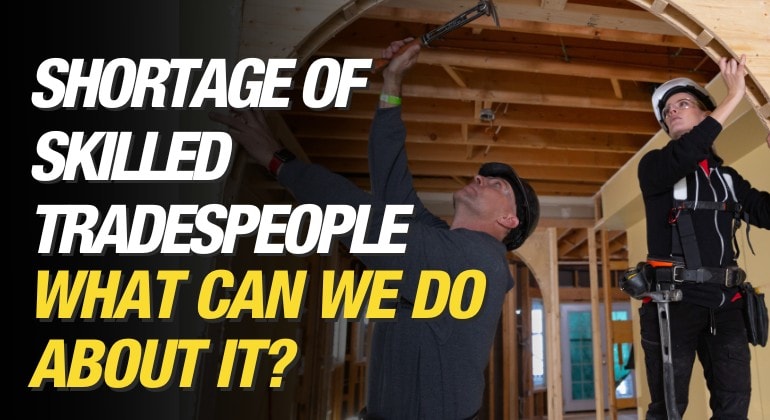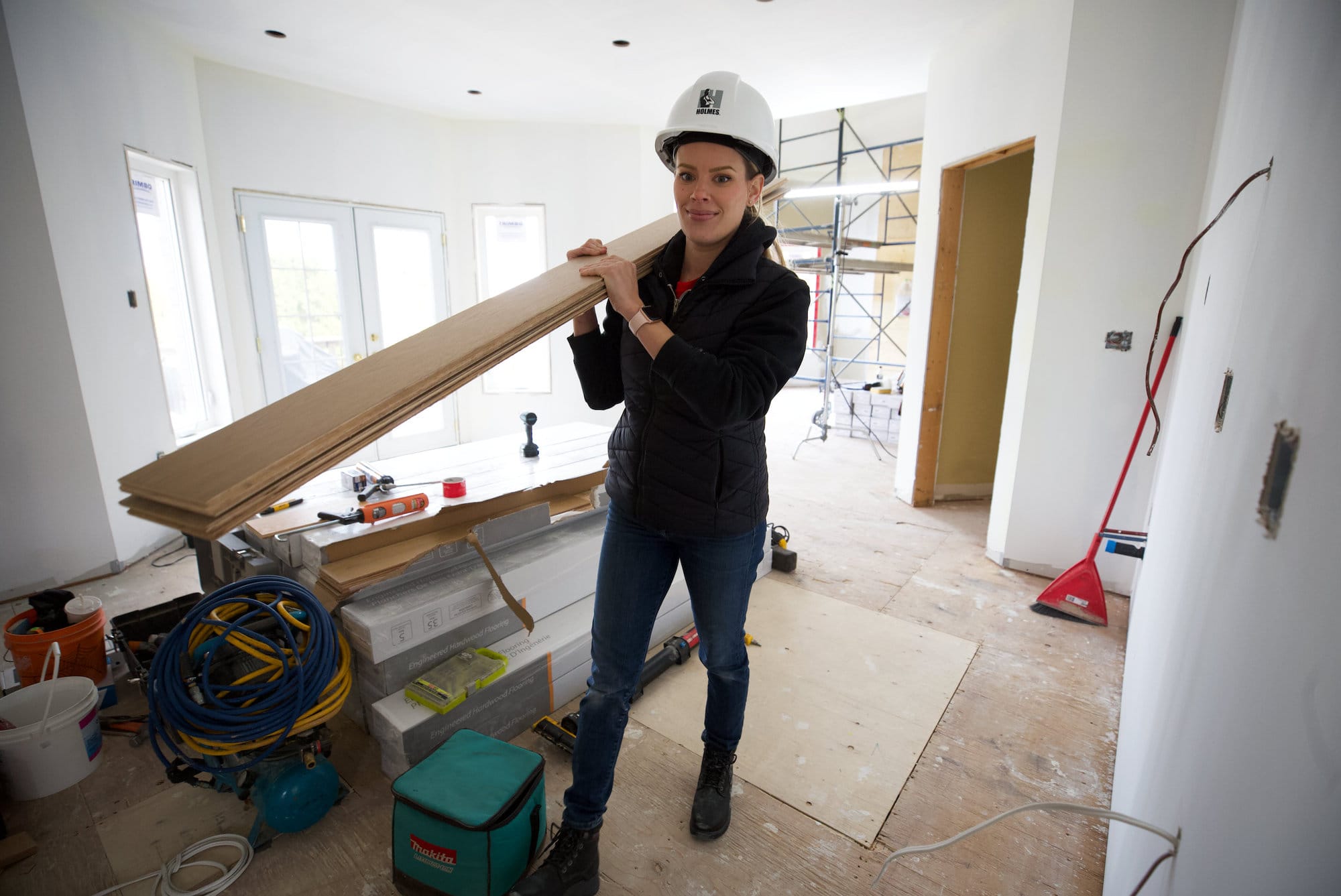When it comes to homes, water is enemy number one, and these 3 exterior home maintenance tasks will help prevent water damage. Water damage is one of the most costly...

Why is There a Skilled Trades Shortage?
By Mike Holmes
Mike’s Advice / Skilled Trades
Thursday, February 13th, 2025 @ 9:59am
Where Are All The Trades People?
When I was in school, I took shop, welding, sheet metal and carpentry. I think it was a HUGE mistake taking these classes out of our schools. If we don’t expose the younger generation to the skilled trades, how will they know it’s a viable career option?
The Growing Demand For The Trades
The demand for skilled workers is only expected to grow in the coming years. That means more choices and opportunities for people who choose to pursue a career in the trades. I did a podcast on this topic and had a great discussion with a builder and my son Mike Jr.
The Holmes On Homes Podcast – Shortage In The Skilled Trades
PART 1 Mike Holmes dives deep into one of the most crucial issues in the construction industry today: the shortage of skilled tradespeople🎙. Does no one want to work anymore? Are parents discouraging their kids to join the trades? Why were shop classes pulled out of schools? Mike shares his insights on the growing gap and why it’s critical to fill it. He also discusses how we can encourage young people to pursue careers in trades, the importance of training, and the role of mentorship in developing the next generation of skilled workers.
PART 2 In this in-depth Holmes on Homes podcast episode, Mike Holmes dives into one of the most pressing issues facing the construction and trade industries today—the ongoing shortage of skilled tradespeople. Mike Holmes and contractor son Mike Holmes Jr explore the causes of this shortage in the skilled trades and the consequences. Whether you’re a contractor, a tradesperson, or simply interested in the future of the construction industry, this episode provides valuable insights you won’t want to miss!
Is There Really A Shortage In The Skilled Trades?
“More than 245,100 construction workers are expected to retire by 2032, creating a shortfall of just over 61,400 workers (BuildForce Canada, 2023). Recent data from Statistics Canada indicate that while Canada leads the G7 as the most educated workforce because of its large share of college and university graduates, the number of working-age (25 to 64 years) apprenticeship certificate holders has stagnated or fallen in critical fields, such as construction, mechanic and repair technologies, and precision production (Statistics Canada, 2022a). The COVID-19 pandemic in 2020 also caused record declines in trade registrations and certifications, which have yet to recover. This could lead to significant gaps in the supply and demand for journeypersons in the future, further worsening the potential labour shortage in the skilled trades (Statistics Canada, 2022b).” – Stats Can.
Why Is There A Shortage In The Skilled Trades?
Personally, I believe it comes down to these factors:
- Parents and educators are encouraging students to become lawyers, doctors and engineers. There is no longer a push for young kids to consider a career in the skilled trades.
- There is a stigma associated with the skilled trades that the trades are a fallback career. The sentiment seems to be, if you dropped out of school, you should consider a career in the trades.
- The retirement of the baby boomer generation is leaving a huge gap in the workforce. Fewer young people are entering the trades to replace them.
- Women are underrepresented in the workforce. Construction has long been a male-dominated field, and women should be encouraged to explore this industry.

Sherry Holmes. Anyone who works in the trades is already a hero to me—girls, boys, young, old. The work isn’t easy. It’s under-appreciated, undervalued, and bottom line, it’s tough work that requires even tougher skin.
Inspiring The Next Generation of Skilled Trade Workers
I strongly believe we need to address the stigma in the skilled trades. Inspiring and supporting the next generation of skilled workers is crucial. We need to change societal perceptions about trade careers. This includes parents, teachers and guidance councillors. Many young people are encouraged to pursue a four-year college degree, with limited exposure to the value and benefits of skilled trades. We need to talk about a career in the trades as rewarding and lucrative.
Local schools and career centers can play a significant role in exposing students to the skilled trades at an early age. Organizations such as Jill of All Trades, Skills Canada and many others provide hands-on experiences, training programs, and career fairs that emphasize the opportunities within skilled trades.
Additionally, we should invest in expanding apprenticeships and vocational programs. By offering more apprenticeship opportunities, businesses can ensure that workers are trained with the right skills while earning a steady income. Vocational programs should also evolve to incorporate modern technology and innovative methods, something that will be attractive to the younger generation.
I also want to see our government and industry leaders developing policies that make skilled trade careers more attractive. This can include incentives for training programs, tax benefits for companies offering apprenticeships, and funding for technical education.
And when it comes to retention, the work culture is very important. Providing ongoing training, benefits, and opportunities for growth can encourage retention and reduce turnover in the field.
Where To Listen to Mike Holmes’s Holmes on Homes Podcast
Listen to new episodes of Season 5 of the Holmes on Homes Podcast every Thursday, available on all podcast streaming platforms including Mike Holmes’ YouTube Channel as well as Apple Podcasts and Spotify.
Looking for a new podcast? The Holmes on Homes podcast isn’t just for pros—it’s for anyone who wants to build better, live healthier, and feel more confident in their home decisions. Mike Holmes brings it all—expert interviews, lessons from the jobsite, and thoughtful conversations. Each episode delivers honest insights, expert advice, and the kind of practical knowledge that empowers you to take action.
About Mike Holmes:
Mike Holmes is Professional Contractor, TV Host on HGTV, TV producer, public speaker, educator, author, Founder at Holmes Approved Homes and Mike Holmes Inspections.
RELATED








